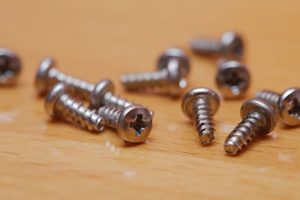 In part one, we discussed the different types of screw heads and why there are so many. But now, it’s time to focus on screw point types.
In part one, we discussed the different types of screw heads and why there are so many. But now, it’s time to focus on screw point types.
Check out our EZ Screw Builder to build your custom screw!
Much like custom screw heads, there are a bunch of different types of points that come from a screw manufacturer. Each has a different purpose and belongs to different groups. Let’s take a look at a few of them.
Thread Cutting
There are five types of thread cutting screws that are used in different ways. First, a screw with a single flute creates a fine machine thread. This is used for field replacement. Next, one with a coarse tapping thread and a really long, sharp point is used for capturing chips. A screw with maximum tightening torques is perfect for chip clearing.
There are some that are pretty much identical to those with the maximum tightening torques. However, they have a coarse Type B thread. These are used for plastics and other soft materials. Finally, we have the screw with a machine screw thread and a blunt tapered point. This is used primarily for heavy metals.
Tapping
There are three types of tapping screws out there. First, a generic tool with far apart grips and a thin thread is used to cut through thin metals. While it’s useful, it’s not recommended for use with new designs. Next, we have a screw that is much like the first. However, this one has a wider body but still has a point. This is used for any standard project. Finally, we have one with a larger body but no firm point. This works best with heavier, thicker metals.
Thread Forming
The first screw of this grouping has a coarse or fine pitch machine screw thread. This one is perfect with heavier metals and does a good job of aligning sheet metals. Another type is one that also has a fine or coarse pitch machine screw thread, but has a blunt top. This one also works well with heavier metals. Finally, we have a one that is usually coarse in machine screw threads. This provides the best strip-to-drive ratios.
The concept of the tool dates back to about 200 B.C., so they have a long history behind them. Now that you know all about the heads and points, you know that each has a different purpose. Their purposes differ depending on the project and the custom screws. Keep these in mind when it comes times for your next project.

 In part one, we discussed the different types of screw heads and why there are so many. But now, it’s time to focus on screw point types.
In part one, we discussed the different types of screw heads and why there are so many. But now, it’s time to focus on screw point types.